Getting ready to go to the office can be a pain in the neck. You need to pick the right outfit, take proper care of your skin and get your hair looking perfect. While we can’t help you with the first 2 procedures, we may have a life hack for you in terms of hairstyling: protective styles. These styles will have ready to head out for the office right after washing up and getting dressed.
There is a stigma against protective styles which is currently being tackled seriously. So, what are protective hairstyles in the workplace? The Braided Updo, Crochet, Braided Bob, Finger Coils, Twist-Out, Perm Rod Set, Roll And Pin Updo, Halo Braid, Flat Twists, Straight-Back Cornrows, Box Twists, Double French Braids, And the Braided Bun are all excellent options.
Along with identifying the best styles for you to try out around the office, this article is going to discuss the concept of hairstyle discrimination and why it is so important for you to stand up against this unfair practice and earn the right to wear your hair the way you want.
What Is Hairstyle Discrimination
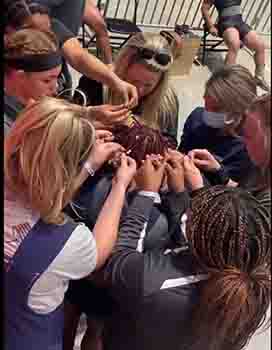
You may not have heard of hairstyle discrimination but it is a serious that plagues the African American community. Because of their hair, they are denied employment for jobs they are fully qualified for. Furthermore, they are ridiculed and exposed to a hostile work environment. This is not just an issue faced by African Americans.
Anyone being harassed or excluded for their hair, regardless of race, gender, or ethnicity, is said to face hairstyle discrimination. Unfortunately, this phenomenon is not just present in the workplace but in other walks of life as well. It is especially prevalent in schools where some students are even deprived of educational rights for their hair.
How is hairstyle discrimination carried out? The most common way is through grooming policies. When the company can decide how you can work your hair, it creates room for discriminatory practices. In a lot of cases, it can be clearly seen that people of color are disproportionately subjected to rules and regulations. Due to the prominent nature of Afro-hair, the African community tends to face this a lot more often.
Why Is It Important To Combat Hairstyle Discrimination
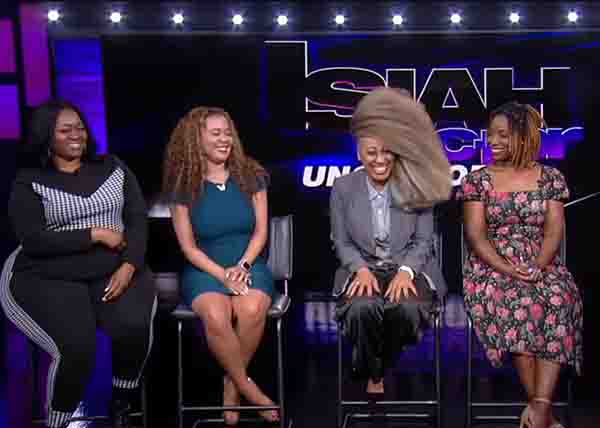
A lot of people tend to brush this issue off as something that isn’t a big deal. This could not be further from the truth. Hairstyle discrimination is preventing you from doing the following 5 important actions.
1. Combat Racial Prejudice
There are strong racial and societal biases acting against the Black community today. There is a social stigma against their hair type and the protective styles that they wear. They need to tackle racism in the workplace because of their hair. If the problem is ignored, it won’t be possible to fight the negative stereotypes.
One such negative stereotype is that natural black hair is not neat. The idea that the hair texture of Afro-hair is dirty is an odd perception. People assume that this type of hair is unkempt when in fact, it is just the natural shape of the hair. This is a concerning phenomenon as the perception of neatness and professionalism is heavily centered around European natural hair.
Standardizing this process is a fool’s errand as both these concepts are subjective. Some may not find braids and curls to be professional while others might. Boiling it down to simpler guidelines would be helpful such as keeping your hair clean and well-managed. This negates the likelihood of discrimination.
2. Ensure Freedom Of Expression
You have the right to express your own culture and heritage wherever you go. No company can deprive you of representing your culture. Protective styles are part of black heritage. It is a style that was tailor-made for this texture. For a lot of people, these styles form an important part of their identity. Not allowing one to wear this style reduces their ability to express themselves.
3. Reinvent Beauty Standards
Finding the right style to wear can be quite a daunting task. In some cases, it is even a cause for anxiety. People get so overwhelmed and stressed by this search that they grow self-conscious. This psychologically damages their motivation and work performance. Trying to meet strict beauty standards is a burden that must be removed.
Furthermore, professionalism in the modern corporate scene is based on European culture. This is extremely unfair to other cultures and protective styles in particular get labelled unprofessional. The tag of office-appropriate should be available for all types of hairstyles so long as they are not too distracting and neatly managed.
4. Preserve Culture
Aside from self-expression, protective hairstyles also serve an important role in preserving African culture. These styles have been worn for thousands of years and represent a rich history. It would not be an exaggeration to say that a lot of people have an emotional connection to these styles.
As such, the black community should not be hindered from wearing a style that’s been ingrained into their culture. The historical significance of these styles automatically makes them a fit style for any environment, even the workplace.
5. Improve Your Hair’s Overall Health
Lastly, protective styles are practical styles. They do wonders for your hair’s health. As the name suggests, it will give your hair the protection that it needs from foreign elements. On top of that, it retains the moisture in your hair and keeps it well-hydrated. This stops it from going frizzy and looking unprofessional.
The Crown Act Of 2022
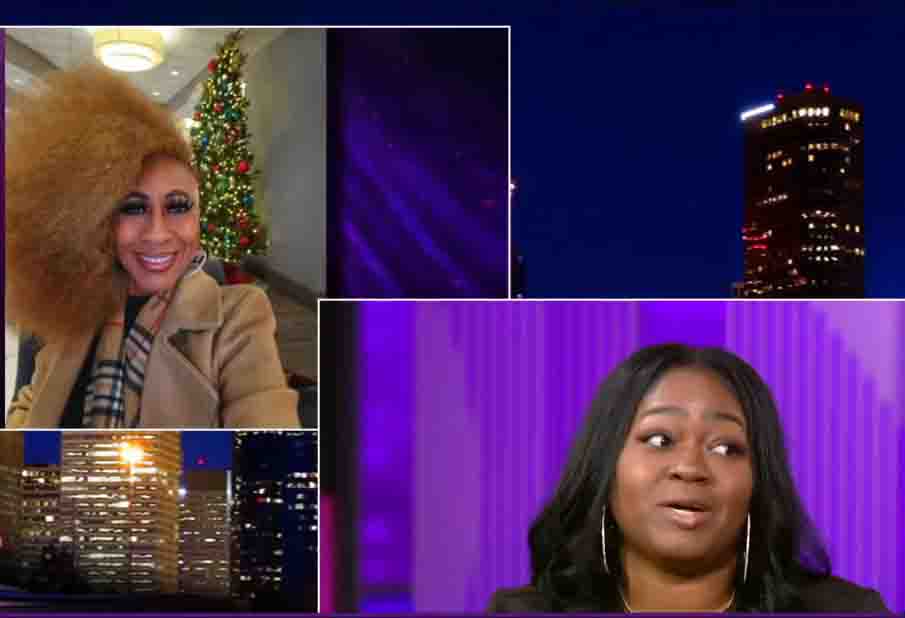
We aren’t the only ones who have noticed this serious issue. In fact, the US government has been hard at work for years in order to create a legal framework that will stop hairstyle discrimination once and for all. The Creating a Respectful and Open World for Natural (CROWN) Hair Act of 2022 has finally made that happen.
Before reaching federal status, the state of California had a version of the CROWN Act, which ensured hair texture and protective hairstyles were included under the definition of racial traits. This helped usher in the national legislation. The CROWN coalition is working hard to get this bill legalized in all 50 states.
The core values of this act are respect and acceptance. The CROWN Act was made to lead a cultural shift that made people more accepting of different hairstyles. It addresses the issue of discrimination, prohibiting grooming policies, dress codes, and official remarks demeaning any hairstyling that holds racial significance.
13 Protective Hairstyles You Can Wear To The Office
Now that you know that you have every right to rock a protective style to work, what styles should you go for? Obviously, you can’t go for a loud style such as accessorized looks. You need to maintain a professional appearance:
These 13 protective hairstyles can keep your hair safe and give you a polished, workplace-appropriate look at the same time.
1. The Braided Updo
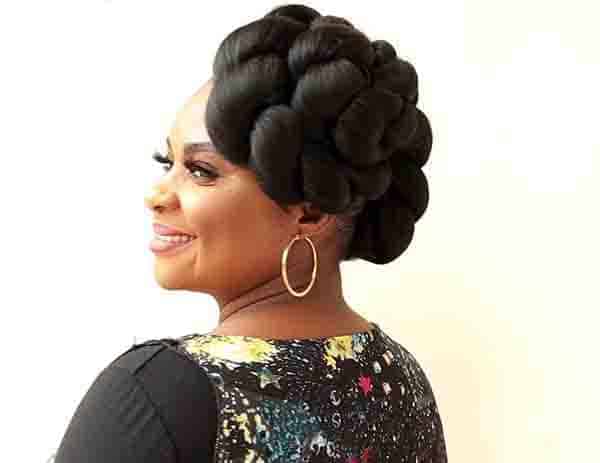
The fact of the matter is that most protective styles are exclusive to the African community. If you are outside of this community and you try these styles, you are risking cultural appropriation. The good news is that a braided updo is not one of those styles.
This elegant style tucks away the ends of your hair and makes you look elegant and classy. It is a great look for the workplace for anyone.
2. Crochet
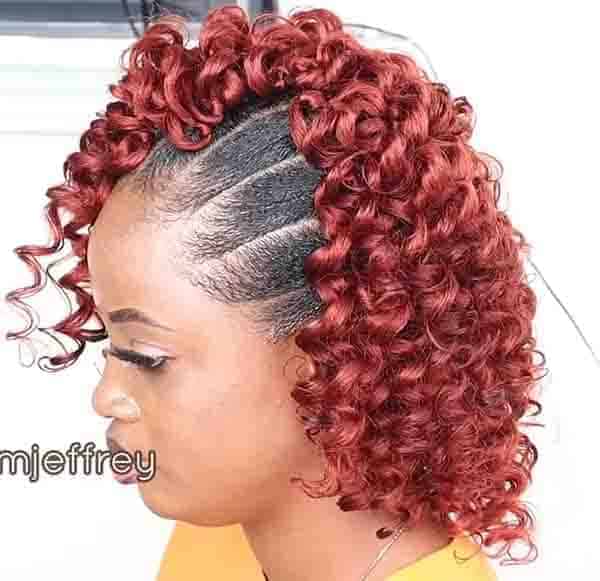
If you are looking for a style that will help you represent your culture proudly, crochet is a good pick. Be warned though that not everyone can pull off this look. It is quite the fashion statement. However, it is not a style that screams “Look at me.”
It is not tacky in any sense of the word. If the style is done right and you can carry it well, this is an excellent option regardless of where you work.
3. The Braided Bob
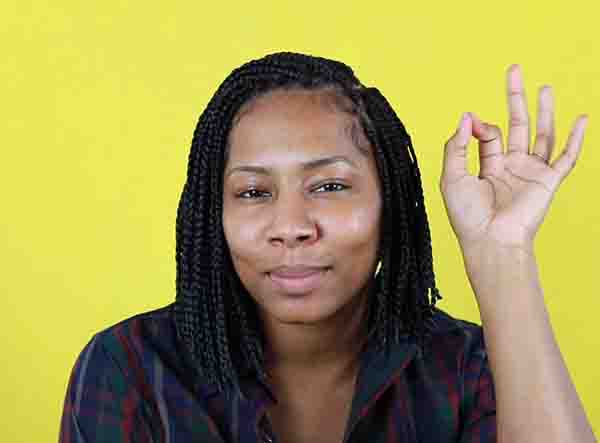
Long hair isn’t for everyone. It is hard to manage and reduces your mobility in some cases. It is even more of a hassle for protective styles because it takes so long to install. If you are not a fan of long hair, braided bobs are perfect for you.
This style is done with medium or short hair and is about as comfortable as it gets. As long as you don’t accessorize it, it is perfectly fine for the workplace as well.
4. Finger Coils
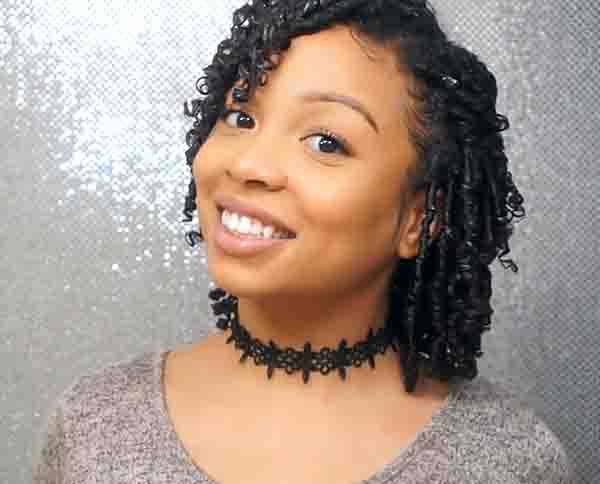
If you’ve seen finger coils, you know that is an incredibly unique look. As with most different looks, it is a little difficult to execute. First and foremost, you need the right kind of hair, you can not do this style with fine, brittle hair. On top of that, it can be a laborious process as coiling your hair with your fingers can get tiring.
However, the end result is worth it. This style looks absolutely gorgeous. It is a style you can wear to the office and to a party.
5. Twist-Out / Braid-Out
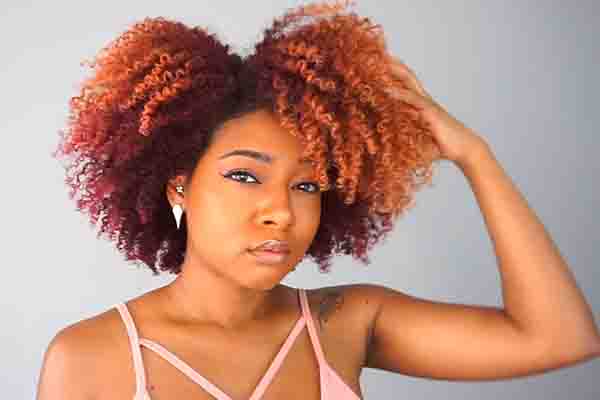
The twist-out and braid-out are similar styles that make your hair extend outwards into waves. These styles personify elegance. The only difference is that twist-out is a bit more complicated. Braid-outs are made of simple braids whereas twist-outs employ the more complex twists.
Again, you should be able to wear this to your workplace without drawing any unnecessary attention.
6. Perm Rod Set
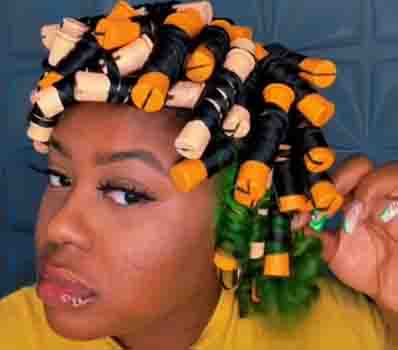
This is a style that utilizes a unique grooming tool, the perm rod. It is difficult to qualify this as a protective style as you need to work a little hard to tuck away your ends but it is possible. This is not an easy style but it is worth trying out. The best part is that you don’t need to commit to it, it lasts only about 5 days. Keep it neatly organized and it is fit for the office.
7. Roll And Pin Updo
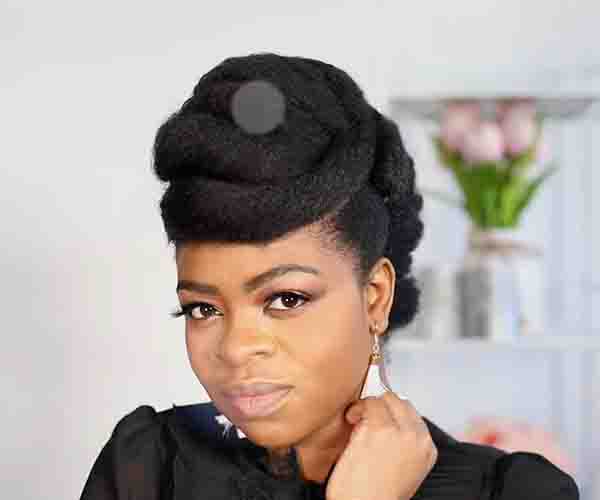
From one difficult style to another, you need to go to the stylist for this one. This is not a do-it-yourself project, especially for beginners. If executed right, your hair will look amazing. However, keep in mind that this is a style that may be too extravagant for the office. If your hair is too long, the volume may be distracting. We only recommend it for medium hair.
8. Halo Braid
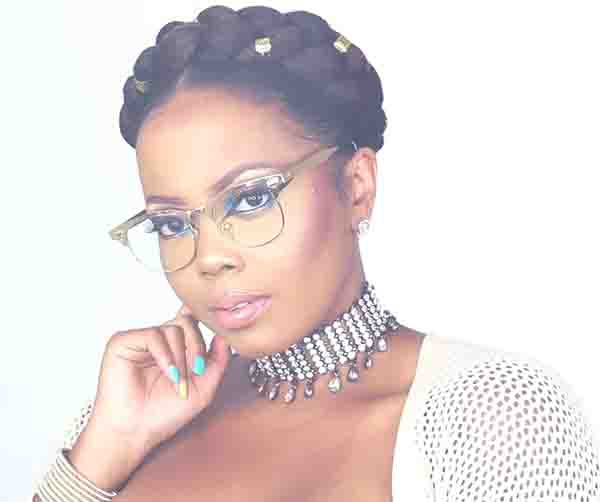
This is another style that anyone can wear without offending anyone. It is one of our favorite styles because of its simplicity. You will look like a queen with this style in place and slay your workday.
9. Flat Twists
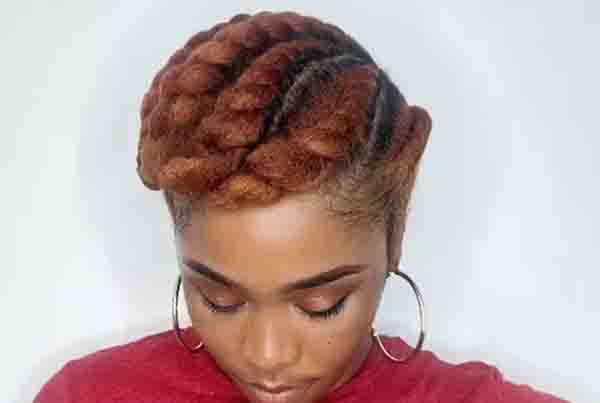
If you thought cornrows were a difficult style, this is going to blow your mind. Flat twists are one of the most complicated styles out there. This is not a style we would recommend for everyone as it does not suit everyone.
10. Straight-Back Cornrows
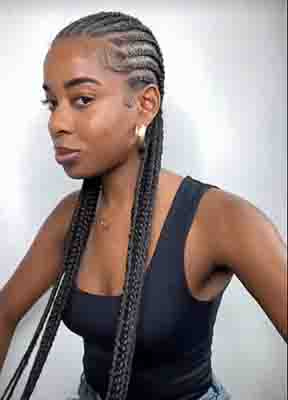
Straight-back cornrows are another style that you need a trip to the salon for. This is a good example of the phrase: Beauty requires effort. This is not an option for those with short hair either as length is an important part of the look.
11. Box Twists
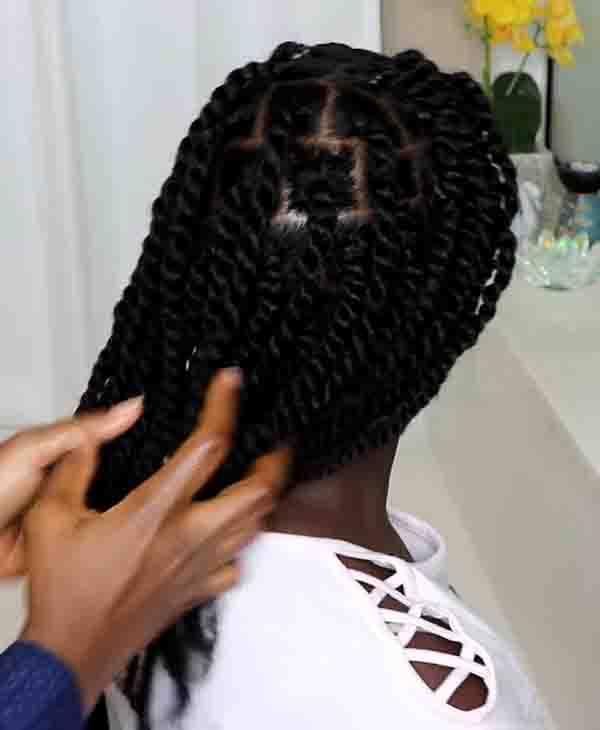
From incredibly complex styles to a fairly simple one, box twists are a safe look that requires little effort. This is a timeless look that is the hairstyle of choice among the black community. It is also the perfect workplace hairstyle, you won’t be drawing much attention to yourself.
12. Double French Braids
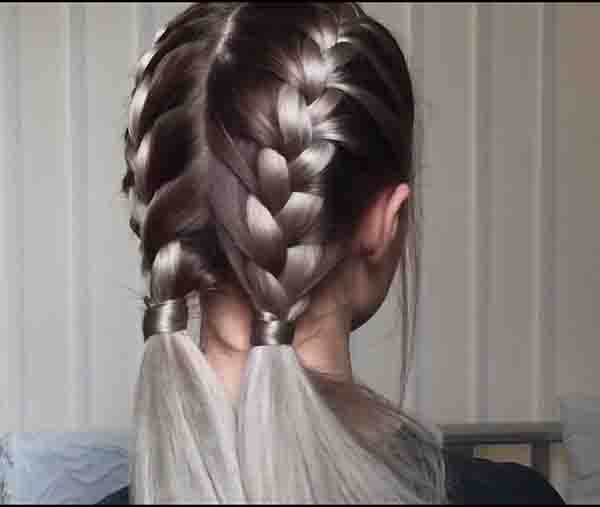
This is yet another style that isn’t exclusively for the black community. Double French braids are incredibly easy to make and help protect your hair really well. This is a good option for those who want to try protective styles but have fine hair.
13. Braided Bun
They say save the best for last. We end the list with, you guessed it, another universally accessible hairstyle. The braided bun is about as classy as it gets. You keep your hair neatly tucked away while looking marvelous. This is our favorite look for the office.
FAQ
Yes, a loose braid can be considered a protective hairstyle as it helps to minimize friction and tugging on the hair, reducing the risk of damage and breakage.
Yes, braids are generally considered protective hairstyles as they keep the hair tucked away and shielded from external elements, reducing manipulation and promoting hair health.
Yes, wigs can be considered protective styles as they provide a barrier between your natural hair and external factors, allowing your hair to rest and grow without being exposed to styling stress.
People opt for protective hairstyles to minimize damage and promote hair growth. These styles help to reduce manipulation, protect the hair from environmental stressors, and retain moisture, leading to healthier and longer hair.
Acceptance of braids in the workplace can vary depending on company policies and cultural norms. However, many workplaces embrace diverse hairstyles, including braids, as long as they are neat, professional-looking, and in line with the overall dress code.
The duration for leaving protective styles in can vary depending on individual preferences and hair type. However, it is generally recommended to keep protective styles in for a maximum of 6-8 weeks to prevent matting, tangling, and potential damage to the hair.
Low manipulation hairstyles are styles that require minimal handling and manipulation of the hair. These styles often involve gentle techniques and protective measures to minimize breakage and allow the hair to rest and grow.
Braids are considered protective hairstyles because they keep the hair strands tucked away and shielded from external factors, such as friction, heat, and harsh weather conditions. This reduces the risk of damage and promotes healthier hair growth.
Yes, wrapping your hair is commonly considered a protective style. It involves using a scarf or wrap to cover and protect the hair, preventing friction and preserving moisture while you sleep or go about your day.
Yes, braids can be a protective hairstyle for curly hair. They help to prevent tangles, reduce breakage, and retain moisture, which are common challenges for curly hair textures.
A high bun can be considered a protective style if it is done gently and without causing excessive tension on the hair. It can help to keep the ends tucked away and minimize manipulation, promoting hair health.
The main difference between a protective style and a low manipulation style lies in the level of manipulation involved. Protective styles aim to shield the hair from external factors and reduce manipulation significantly, while low manipulation styles minimize hair handling and stress but may not provide as much coverage and protection as full protective styles.
Yes, an updo can be considered a protective style as it keeps the hair off the shoulders and tucked away, reducing friction and minimizing exposure to external elements.
To minimize damage from ponytails, opt for looser styles that avoid excessive tension and pulling on the hair. Using fabric hair ties or scrunchies and varying the position of the ponytail can also help reduce stress on the hair.
The longevity of a protective style depends on various factors such as hair type, maintenance, and personal care routine. Generally, well-maintained box braids, faux locs, or knotless braids can last several weeks, providing longer-term protection for the hair.
Let’s Wrap It Up
There you have it. You have now successfully shortened your morning routine by at least 10 minutes. Jokes aside, we hope you now know the answer to the question: What are protective hairstyles in the workplace?
Bear in mind that you do not need to stick to the 13 styles we mentioned above. You can go for any other protective style as long as it is not too flashy. In a professional setting, the goal is to draw minimal attention to yourself. Let your work do the talking. Your hairstyle and attire will ensure that you look modest.
Along with that, your hair quality also plays a role. Frizzy hair naturally looks less professional. You need to have a good haircare routine to ensure that you look as well-put-together as possible.

